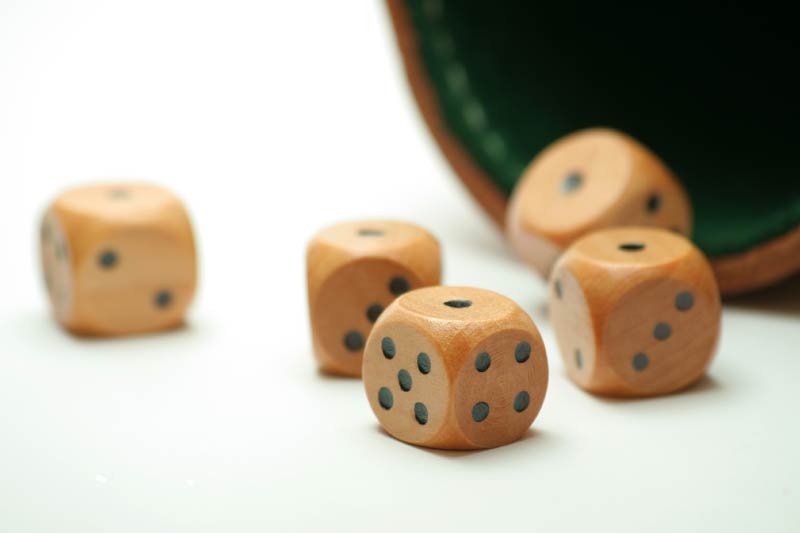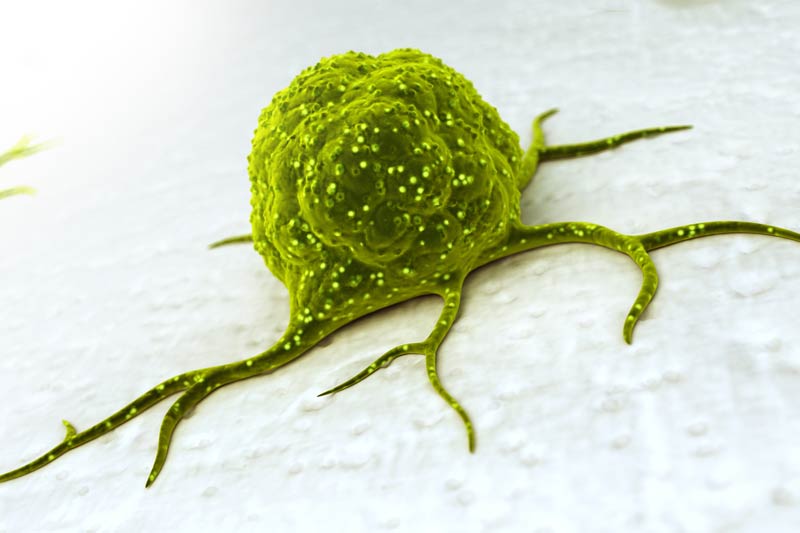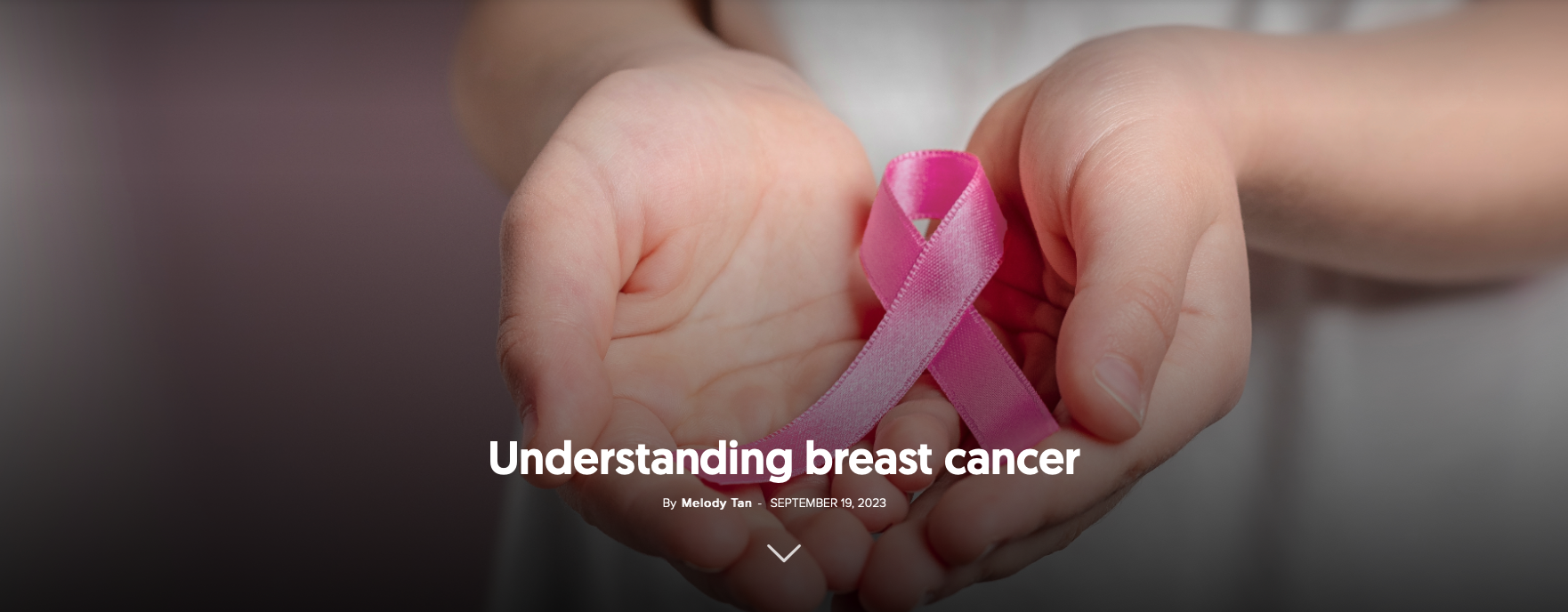Many had not yet finished clearing away the leftovers from the New Year’s Eve table, almost no one had returned to work, politics was still numb and journalists yawned with boredom because almost nothing of interest had happened on 2 January 2015.
Then came the news: “Most cancer types ‘just bad luck’, US research shows.”
Most of the media picked up the story. For some, the wording was liberating: lifestyle is almost irrelevant—from the perspective of the possibility of getting cancer. It all comes down to luck or misfortune.
A little over a week later, however, the BBC published a new report on the study, showing that there had been much criticism of the way it had been reported in the press, with several commentators also complaining about the research methodology.
Amid the controversy, it is important to know what role bad luck does or does not play in cancer cases.
What did the authors of the study actually find?
In the field of biological phenomena, findings are often not black and white, but have a complex variety of shades, as is the case here. To understand what the authors of the study did and did not say, and what we should take away from it, we should first look at the scientific study as it was published in the journal Science, not the simplified version in the press reports. This is because there is a discrepancy (which some consider minor, others greater) between what the authors said in the scientific paper and what the same authors (or their PR entourage) said in a press release, which was then picked up by international news agencies. The scientific study itself was much more sober, less tabloid, than the headlines sounded: “Cancer etiology. Variation in cancer risk among tissues can be explained by the number of stem cell divisions.”[1]
It is well known that an organism is made up of cells, many cells: thousands, millions, billions. And cells are grouped into tissues, each of which has different morphological (shape, appearance) and functional properties. For example, skin tissue is very different from bone tissue or liver tissue; lung tissue is very different from nerve tissue, and so on. What the authors actually did was to show a correlation between the number of stem cell divisions in different tissues and the lifetime risk of developing cancer, for 31 types of cancer. What did they find? That the higher the number of stem cell divisions in the tissue, the higher the lifetime risk of developing certain cancers.

This should come as no surprise to anyone with even a basic understanding of how cancer develops. We know that cancer is essentially a group of cells that start to divide uncontrollably. And this uncontrolled division is usually triggered by certain errors in the cell’s genetic material (DNA). Every time a cell divides to make another cell, the DNA, a very large molecule, like a book with many pages, has to be copied. Intuition tells us that copying errors are much more likely to occur when a book is copied millions of times than when it is copied a few hundred times. Similarly, the greater the number of cell divisions, the greater the likelihood of error, and therefore of cancer. This is nothing new, as the following sentence from a book published 22 years ago shows: “Any factors that increase rates of cell division such as some hormones, excess calories, or chronic inflammation cause increased cancer.”[2]
There is a relatively simple tool in statistics to assess the degree of correlation between two variables, in this case the degree of correlation between the number of stem cell divisions in tissues and the incidence of various forms of cancer. This tool is the regression coefficient, or r, a parameter that can take values between -1 and 1. If the values are between -1 and 0, it is a negative correlation (an inversely proportional relationship), with the value of r being the more convincing the closer it is to -1, and the weaker the value the closer it is to zero. In the case of positive values, it is a positive relationship (directly proportional), stronger the closer r is to 1 and weaker the closer r is to 0.
Cristian Tomasetti and Bert Vogelstein, the authors of the controversial study, calculated a correlation coefficient of 0.804, indicating a fairly strong association between the two variables. The square of the correlation coefficient (0.804 x 0.804 = 0.65) is known as the “coefficient of determination” and expresses the percentage of variability explained by the independent variable. In other words, about 65% (i.e. two thirds) of the observed variability in cancer incidence is related to the number of cell divisions. The rest (about 35%) is probably due to environmental or genetic factors, according to the authors.[3]
How many cancers are due to bad luck?
The short answer is the same as before the study was published: we don’t know. Why doesn’t the study by C. Tomasetti and B. Vogelstein answer this question? Because it has too many limitations that make it difficult to find an answer.
First of all, the coefficient of determination (65%) is only an estimate, a kind of average. The true value lies within what we in statistics call a “confidence interval,” which is usually calculated at a 95% confidence level.[4] Based on the data in the study, the confidence interval is between 39 and 81%. This means that, based on the data in this study, chance (luck or bad luck) could actually be the cause of cancer only 39% of the time, or even as much as 81% of the time (any other value between the two extremes could also be the true value, we just know that it is somewhere in this range).
Secondly, the study did not include data on all types of cancer to be truly representative of the “cancer” phenomenon, but only on 32 types of cancer, missing some cancers with significant prevalence: prostate, breast, cervical, uterine, endometrial, kidney and bladder.[5][6] More importantly, the authors did not say that two-thirds of all individual cancers are due to “bad luck” but referred to two-thirds of all cancers.

Let’s imagine 32 places in a country: the capital, maybe three big cities, another 7-8 towns and the rest, smaller or larger villages. A group of researchers discovers that—let’s imagine—two thirds of the country’s population suffers from hypochondria and that it is caused by bad luck. Before we check whether this is true, we learn that the data actually comes from three small towns and about 19 villages, which together don’t represent half the population of the towns studied, let alone the population of the entire country. In our imaginary example, 22 out of 32 towns suffer from hypochondria, i.e. two thirds of the towns but not of the population. Just as each town has a number of inhabitants, each type of cancer has a corresponding number of patients. But just as towns are not the same, the number of patients corresponding to each type of cancer is not the same. There are rare cancers and very common cancers. C. Tomasetti and B. Vogelstein referred to the total number of cancers analysed, not the total number of cases.
Delpierre et al (2015) used C. Tomasetti and B. Vogelstein’s data on cancer incidence in 2014 and calculated in terms of cases. The conclusion was that only about 20% of cancer cases are causally related to “bad luck”.[7] In addition, these authors show that cancers not listed by C. Tomasetti and B. Vogelstein (prostate, breast, cervix, uterus and endometrium, kidney and bladder) account for about 40% of all cancers, and for these cancers certain environmental factors are already known or suspected to play a causal role. C. Delpierre et al. did not claim that only 20% of cancers are caused by “bad luck”; their intention was not to give a precise estimate in this respect, but only to show that, using the weapons (methodology) of C. Tomasetti and B. Vogelstein, the correct picture is very different from the one originally conveyed. They also criticised other aspects of the study, which are far too technical to be discussed here. In the same vein, the International Agency for Research on Cancer, the specialised body of the World Health Organisation, felt the need to react strongly, stating that, with the current state of knowledge, “nearly half of all cancer cases worldwide can be prevented.”[8]
Thirdly, the authors of the controversial study used epidemiological data from a single population for their calculations. However, the incidence of many cancers varies enormously between different (sub)populations. For example, the incidence of oesophageal cancer is 20-30 times higher in China than in the United States, and 50-100 times higher in a person with Barett’s oesophagus.[9] These data strongly suggest that this form of cancer is preventable (e.g. by preventing gastro-oesophageal reflux disease), but in the Tomasetti and Vogelstein classification it is listed as a cancer caused by “bad luck.”[10]
Similarly, the incidence of liver cancer ranges from two cases per 100,000 men in Iceland to almost 100 cases per 100,000 men in Mongolia. And during the 20th century, the risk of lung cancer increased 50-fold and the risk of cervical or stomach cancer decreased 10-fold. Yet the authors’ calculations are based on a single figure for each type of cancer.[11] A much more plausible explanation is that certain controllable environmental factors (from lifestyle to environment) explain these differences.
Then there are many other considerations that cannot be discussed in detail here (e.g. that the presence of mutations is necessary but not sufficient for cancer to develop, that the effectiveness of the cellular repair mechanisms and the immune system are equally important, or that the rate of cell division can vary according to epigenetic, age, exogenous factors, etc.).[12] So, how many cancers are caused by bad luck? We simply don’t know.
How many could be prevented?
The idea of bad luck rules out the idea of prevention. If something is preventable, it is not bad luck, but a deterministic phenomenon. The most conservative estimates suggest that at least a quarter[13] or a third[14] of all cancers could be prevented. Another third could have a significantly increased survival rate or be detected earlier, and better treatments could also increase survival.[15]
On the other hand, there are estimates that suggest the potential for prevention is much greater. For example, it has been estimated that 50-60% of cancers in the United States can be attributed to lifestyle and human behaviour: smoking, physical inactivity, (excessive) sun exposure, or poor diet. If we add another 19% of environmental pollutants[16] (which could be controlled or eliminated), more than three-quarters of cancers could be prevented. Similarly, in China it is estimated that almost 60% of cancers could be prevented. Of these, 29.4% are related to chronic infections, 22.6% to smoking, 13% to insufficient fruit consumption, 4.4% to alcohol consumption, 3.6% to insufficient consumption of vegetables and herbs, and 2.7% to occupational (work-related) risk factors.[17] In any case, these figures are not static. One hundred years ago it was believed (or argued) that there was no link between smoking and cancer. We now know that this is not the case.




















